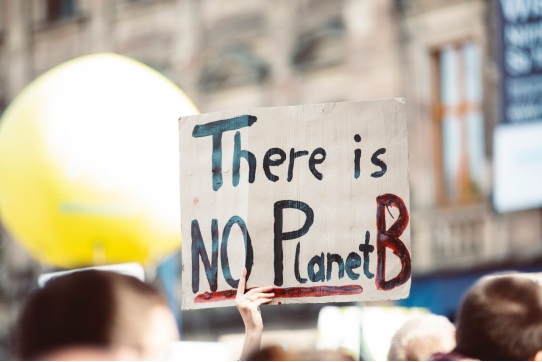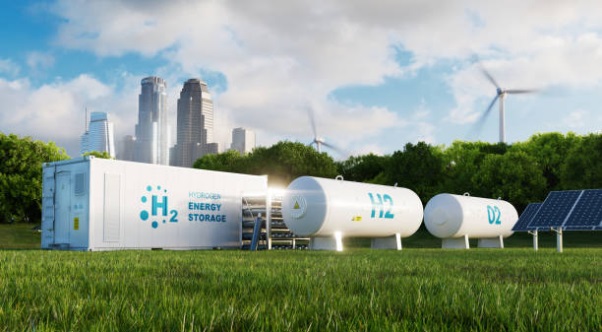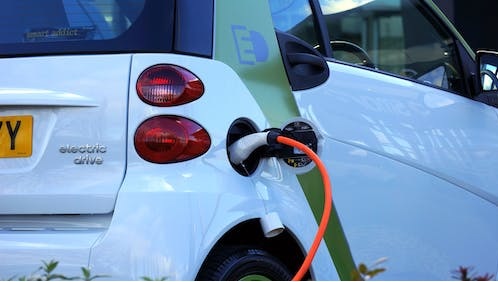The Economic Implications of Climate Change: Counting the Costs

Introduction Climate change is a global crisis that transcends political borders and affects every aspect of our lives. While the environmental consequences are widely discussed, the economic repercussions are equally significant. In this article, we will delve into the monetary language of climate change, exploring the direct and indirect costs it incurs upon societies and economies worldwide. The Rising Price Tag of Extreme Weather Events One of the most palpable effects of climate change is the surge in extreme weather events. These events, including hurricanes, droughts, wildfires, and floods, have become more frequent and intense. As a result, the economic burden has skyrocketed. In 2020 alone, the United States experienced a record-breaking 22 separate billion-dollar weather and climate disasters, costing over $100 billion each. This increase in disaster-related expenses diverts funds away from critical infrastructure and public services, ultimately impeding economic growth. Agricultural Challenges and Food Security Climate change disrupts agricultural patterns, leading to reduced crop yields, increased pests and diseases, and a rise in food prices. The Intergovernmental Panel on Climate Change (IPCC) predicts that the yield of major crops could decline by up to 30% by 2050. For developing nations heavily reliant on agriculture, this poses a significant threat to their economic stability and food security. Health Care Costs Extreme heat events, the proliferation of vector-borne diseases, and the increase in air pollution due to climate change have serious implications for public health. These climate-induced health issues result in higher medical bills, reduced productivity, and increased absenteeism. A report by the World Health Organization (WHO) estimates that the health costs associated with climate change could exceed $4 billion per year by 2030. Infrastructure Damage and Maintenance Rising sea levels, more intense storms, and increased precipitation contribute to the degradation of infrastructure, including roads, bridges, and public buildings. Repairing and maintaining these structures is not only costly but diverts resources that could be allocated elsewhere, such as education or healthcare. Energy Sector Disruptions The energy sector plays a crucial role in our economies, and it’s directly impacted by climate change. The increased frequency of heatwaves can lead to energy grid failures, and extreme weather events can disrupt energy production and distribution. Moreover, the transition to cleaner energy sources, though necessary, often requires substantial investments in new infrastructure and technologies. Migration and Displacement As the impacts of climate change intensify, people in vulnerable regions may be forced to migrate due to droughts, flooding, or other environmental disasters. This mass migration can strain the resources and infrastructure of host countries and lead to economic and social tensions. Insurance Industry Challenges Climate-related damages have led to increased insurance claims. As the frequency and severity of climate-related events continue to rise, the insurance industry faces higher costs, which are ultimately passed on to consumers. Additionally, some insurers are becoming more selective about the coverage they offer in high-risk areas, leaving property owners with fewer options and potentially lower property values. Impacts on Investment and Finance Investors and financial institutions are recognizing the financial risks associated with climate change. As a result, they are becoming more cautious about supporting industries with high carbon footprints. Companies that do not adapt to sustainable practices may find it increasingly difficult to secure investments and loans, potentially hindering their growth and profitability. Loss of Biodiversity and Ecosystem Services Climate change poses a threat to biodiversity, leading to the loss of valuable ecosystem services such as pollination, water purification, and climate regulation. These services are essential for agriculture, tourism, and countless other economic activities. As they decline, the economic toll on industries dependent on these services becomes evident. International Trade Disruptions Climate-induced events can disrupt global supply chains, impacting trade and commerce. For instance, severe weather events can damage key infrastructure in port cities, leading to delays and increased shipping costs. Additionally, shifts in agricultural production due to climate change can affect international food trade, leading to price volatility and potential food shortages. Conclusion The consequences of climate change are far-reaching and profound, with significant economic implications. From the rising costs of extreme weather events to the challenges faced by agriculture, health care, and the insurance industry, the monetary language of climate change is clear—it is a costly crisis that demands attention and action. As we strive to mitigate its effects and transition to a more sustainable future, it is essential to recognize that addressing climate change is not just an environmental imperative but an economic one as well. Failure to do so could lead to even greater financial burdens and disruptions in the years to come.
Optimizing Workplace Excellence: A Guide for Managers and Executives

Full article ; Being a Discerning Observer, the first aspect we delve into is the role of astute observation. It extends beyond the workplace, encompassing employees’ behavior in the digital realm, particularly on social media. The discerning eye can discern early warning signals that may pose a latent threat to organizational health. These signals often elude the corporate dashboard metrics and Key Performance Indicators (KPIs). Take, for instance, the phenomenon of employees celebrating or excessively highlighting seemingly mundane achievements, such as attending a meeting or reputable conference with no contribution. When such behavior is not an isolated incident but rather a recurring pattern within a team or among several employees, it warrants our serious attention. Clarification on Celebrations To clarify, acknowledging and celebrating achievements is a standard practice that fosters motivation, uplifts morale, and cultivates a vibrant workplace culture. However, the crux of our discussion pertains to the precarious terrain of celebrating mediocrity. This practice, while well-intentioned, can usher in consequences far-reaching in scope, impacting not just momentary recognition but also the long-term prosperity of the organization. The Unintended Consequences: – Erosion of Excellence – Dampened Motivation – Undermining High Performers – Weakened Performance Culture – Diminished Team Morale – Inhibition of Innovation – Customer Impact – Recruitment and Retention Challenges While celebrating achievements remains pivotal for nurturing a positive work environment, a judicious balance must be struck. Recognition should be meaningful and aligned with the organization’s objectives and values. Celebrating mediocrity, though well-intentioned, poses considerable risks, including a decline in excellence, waning motivation, and the unintended undermining of high-performing individuals. To ensure sustainable success, organizations must uphold a culture that treasures genuine excellence, champions continuous improvement, and honors those who consistently exceed expectations.
Green Hydrogen: Fuelling the Future

In the quest for a more sustainable and eco-friendly energy future, green hydrogen has emerged as a promising contender. This clean and versatile fuel is generated through a process that produces zero emissions, making it a critical player in reducing our carbon footprint. In this 500-word blog article, we will explore the production of green hydrogen and its diverse applications. Production of Green Hydrogen Green hydrogen is produced through a process called electrolysis. Unlike conventional hydrogen production methods, which typically rely on fossil fuels, this process uses renewable energy sources to split water molecules into hydrogen and oxygen. Here’s how it works: Renewable Energy Input: The first step in producing green hydrogen is to harness renewable energy sources like solar, wind, or hydropower. These sources provide a clean and sustainable source of electricity. Electrolysis: The renewable electricity is then used to power an electrolyzer. Inside the electrolyzer, water (H2O) is separated into its constituent elements: hydrogen (H2) and oxygen (O2). Hydrogen Storage: The produced hydrogen can be stored in various forms, such as compressed gas or liquid, for later use. This production process is entirely emissions-free, as the only byproduct is oxygen. As the world moves towards decarbonization, the production of green hydrogen holds immense potential. Applications of Green Hydrogen Green hydrogen has a wide range of applications across various sectors, making it a versatile and sustainable energy carrier: Transportation: Hydrogen fuel cells are being used to power vehicles, including cars, buses, trucks, and trains. These fuel cells convert hydrogen into electricity to propel the vehicle, emitting only water vapor as a byproduct. Hydrogen-powered vehicles offer longer ranges and shorter refueling times compared to electric vehicles, making them suitable for heavy-duty transportation. Energy Storage: Green hydrogen can be used for energy storage, helping to balance the intermittent nature of renewable energy sources like wind and solar. Excess electricity generated during periods of high renewable energy production can be used to produce hydrogen. This hydrogen can then be stored and converted back into electricity when needed, providing a reliable and stable energy supply. Industrial Processes: Industries such as steel, chemicals, and refineries often rely on hydrogen for various processes. Switching to green hydrogen in these sectors can significantly reduce carbon emissions associated with their operations. Green hydrogen can be used as a clean feedstock for industrial processes or as a fuel for high-temperature heat applications. Power Generation: Green hydrogen can be burned in gas turbines or used in fuel cells to generate electricity. This application is particularly useful in areas where renewable energy sources are abundant but intermittent. By storing excess energy as hydrogen, power generation can be more stable and reliable. Residential and Commercial Heating: Hydrogen can be used for heating in residential and commercial buildings. Hydrogen boilers and fuel cells can provide space heating and hot water while emitting only water vapor, reducing greenhouse gas emissions associated with traditional heating methods. Aviation and Maritime: Green hydrogen is being explored as a potential fuel for aviation and maritime transport. Hydrogen-powered aircraft and ships have the potential to reduce emissions significantly in these high-pollution sectors. Challenges and Future Outlook While green hydrogen shows immense promise, there are several challenges to its widespread adoption. These include the high cost of electrolysis equipment, the need for a reliable and abundant supply of renewable energy, and the development of efficient storage and transportation infrastructure for hydrogen. However, ongoing research and investments are gradually addressing these challenges, and the future looks promising for green hydrogen. Governments and industries worldwide are recognizing its potential as a clean energy carrier and are committed to its development. In conclusion, green hydrogen represents a vital piece of the puzzle in the transition to a sustainable and low-carbon energy future. Its clean production process and diverse applications across sectors such as transportation, energy storage, and industry make it a powerful tool in the fight against climate change. As technology advances and economies of scale are realized, green hydrogen has the potential to play a pivotal role in reducing our reliance on fossil fuels and building a greener, more sustainable world.
The Imperative for Clean Energy: Shaping a Sustainable Future

Introduction In a world facing the daunting challenges of climate change, pollution, and dwindling fossil fuel reserves, the transition to clean energy has become an imperative. Clean energy, primarily derived from renewable sources such as solar, wind, hydro, and geothermal power, represents not only a solution to environmental crises but also a gateway to a sustainable and prosperous future for humanity. In this article, we will explore the critical importance of clean energy, its far-reaching benefits, and why embracing it is crucial for our planet and future generations. 1-The Looming Climate Crisis The urgency surrounding clean energy can be attributed to the looming climate crisis. The burning of fossil fuels, such as coal, oil, and natural gas, for electricity generation, transportation, and industrial processes, releases greenhouse gases (GHGs) into the atmosphere. These gases, primarily carbon dioxide (CO2), trap heat and lead to global warming, causing changes in weather patterns, rising sea levels, and extreme weather events. Rising Temperatures and Their Consequences The global average temperature has been steadily rising due to human activities. As the Earth warms, we witness the melting of polar ice caps and glaciers, which contribute to rising sea levels, threatening coastal communities and low-lying regions. Additionally, warmer temperatures can disrupt ecosystems, affecting wildlife and agriculture, thereby impacting food security. Extreme Weather Events Clean energy is pivotal in mitigating extreme weather events. The frequency and intensity of hurricanes, droughts, floods, and wildfires have increased in recent years. Transitioning to clean energy sources can help reduce GHG emissions and limit these catastrophic events, ultimately safeguarding lives and property. 2: The Environmental Toll of Fossil Fuels The continued reliance on fossil fuels takes a heavy toll on the environment. From extraction to combustion, these non-renewable resources wreak havoc on ecosystems and human health. Air Pollution The burning of fossil fuels emits harmful pollutants like sulfur dioxide, nitrogen oxides, and particulate matter. These pollutants lead to respiratory diseases, cardiovascular problems, and premature deaths. By embracing clean energy, we can significantly reduce air pollution, improving public health and overall well-being. Water Contamination Fossil fuel extraction processes, particularly fracking and oil drilling, pose significant risks to water sources. Spills, leaks, and wastewater disposal can contaminate drinking water supplies and harm aquatic ecosystems. Clean energy, on the other hand, minimizes these environmental hazards, preserving our vital water resources. Habitat Destruction Mining and drilling for fossil fuels often require extensive land use, leading to habitat destruction and biodiversity loss. Renewable energy technologies, like wind and solar farms, have a smaller environmental footprint and can be designed to minimize their impact on ecosystems. Chapter 3: The Economics of Clean Energy Investing in clean energy is not just an environmental necessity; it’s a smart economic decision. Job Creation The clean energy sector has been a significant source of job creation. Renewable energy projects, such as solar and wind farms, require workers for construction, operation, and maintenance. Additionally, research and development in clean energy technologies drive innovation and open up new employment opportunities. Energy Independence Relying less on fossil fuels enhances energy security. Countries that invest in clean energy reduce their dependence on foreign oil and gas, thereby mitigating the economic and political risks associated with energy imports. Economic Growth Clean energy investments can stimulate economic growth. The development of renewable energy infrastructure, including manufacturing, installation, and maintenance, can boost local economies. Moreover, reduced health care costs due to improved air quality contribute to economic gains. Chapter 4: The Promise of Renewable Energy Renewable energy sources, powered by the sun, wind, water, and Earth’s heat, offer a myriad of advantages over fossil fuels. Abundant and Inexhaustible Unlike finite fossil fuel reserves, renewable energy sources are abundant and inexhaustible. The sun shines every day, the wind blows consistently, and the Earth’s internal heat is virtually limitless. Harnessing these sources provides long-term energy security. Low Environmental Impact Renewable energy technologies produce little to no direct emissions, making them environmentally friendly. Solar panels and wind turbines, for example, generate electricity without emitting GHGs or pollutants. This low impact on the environment is a stark contrast to fossil fuels. Decentralized Energy Production Clean energy systems can be decentralized, allowing for local energy production. Rooftop solar panels, small wind turbines, and community-owned energy projects empower individuals and communities to generate their electricity, reducing transmission losses and increasing energy resilience. 5: The Role of Technology and Innovation The rapid advancement of technology plays a pivotal role in the transition to clean energy. Solar Power Advancements Technological breakthroughs in solar photovoltaics have made solar power more efficient and affordable. Thin-film solar panels, bifacial cells, and concentrating solar power systems have expanded the possibilities for harnessing the sun’s energy. Wind Energy Innovations In the wind energy sector, taller turbines with longer blades have significantly increased energy capture. Additionally, advances in energy storage systems enable the smooth integration of intermittent renewable sources like wind and solar into the grid. Energy Storage Solutions Battery technology is a linchpin in the clean energy transition. Lithium-ion batteries, among other innovations, enable the storage of excess energy for use during periods of low renewable generation, ensuring a consistent power supply. 6: Policy and Government Initiatives Government policies and initiatives play a pivotal role in accelerating the adoption of clean energy. Renewable Portfolio Standards Many regions have implemented renewable portfolio standards (RPS) that mandate a certain percentage of electricity generation from renewable sources. These policies incentivize investment in clean energy infrastructure. Tax Incentives Governments offer tax incentives and subsidies to promote clean energy adoption. Tax credits for solar installations and electric vehicle purchases, for example, encourage individuals and businesses to transition to cleaner technologies. Carbon Pricing Carbon pricing mechanisms, such as carbon taxes and cap-and-trade programs, create economic incentives to reduce GHG emissions.

